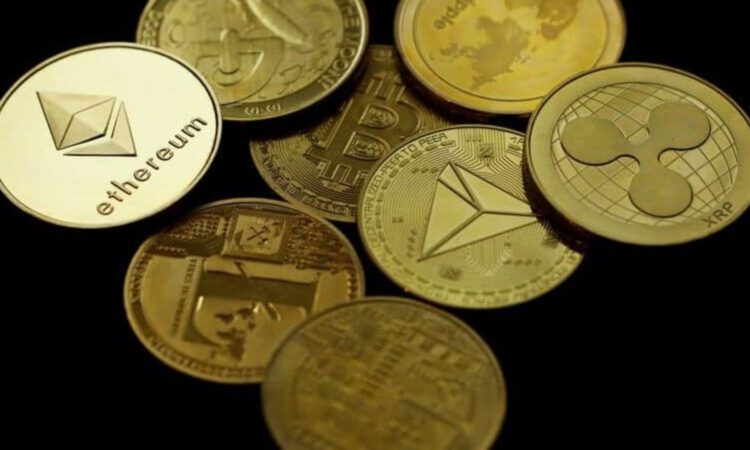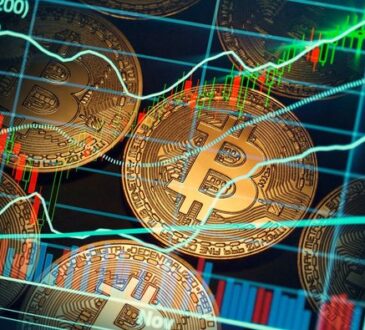What drives crypto HODLers despite volatility, uncertain regulations, high taxes

“The big money is not in the buying and the selling but in the waiting”. All long-term stock market investors will relate to this famous quote by Charlie Munger too well. But, this investing adage is not limited to just investors in the securities markets.
“The big money is not in the buying and the selling but in the waiting”. All long-term stock market investors will relate to this famous quote by Charlie Munger too well. But, this investing adage is not limited to just investors in the securities markets.
HODLers, or holders of cryptocurrencies, too swear by this mantra, standing out from the crowd of fly-by-night investors who buy and sell crypto for a quick buck. HODLer refers to an individual who holds their cryptocurrencies for the long term, despite the market volatility.
Premium benefits
35+ Premium articles every day
Specially curated Newsletters every day
Access to 15+ Print edition articles every day
Subscriber only webinar by specialist journalists
E Paper, Archives, select The Wall Street Journal & The Economist articles
Access to Subscriber only specials : Infographics I Podcasts
Unlock 35+ well researched
premium articles every day
Access to global insights with
100+ exclusive articles from
international publications
5+ subscriber only newsletters
specially curated by the experts
Free access to e-paper and
WhatsApp updates
HODLers, or holders of cryptocurrencies, too swear by this mantra, standing out from the crowd of fly-by-night investors who buy and sell crypto for a quick buck. HODLer refers to an individual who holds their cryptocurrencies for the long term, despite the market volatility.
It is not just volatility that HODLers have to watch out for, they also have to bear up against regulatory uncertainties, heavy taxation, possible bans and the general negative view on the digital currencies. So, what keeps them going? For one, it is their belief in the potential of these virtual currencies.
Mumbai-based Vishal Rajesh Soni, a fixed income dealer, bought his first cryptocurrency in 2018, when he was only 19 years old. “I like exploring new investment opportunities. In 2018, when bitcoin was suddenly in the news, I started learning how cryptocurrencies work. When I discovered the concept of decentralized currency and the technology used to build these currencies, I realized there are several benefits to it and I started investing,” he said.
In Delhi, Anuj Chaudhary, got a chance to understand virtual digital assets (VDAs) and its working in 2020 while working as a market reporter with an international news organization. He got hooked to it and decided to switch careers to work with crypto exchanges and crypto-based companies in the space.
“I want to be a part of the growth of this industry. I bought my first cryptocurrency in 2020 and despite market crashes and negative news, I’ve remained steadfast in my HODLing strategy,” said Chaudhary, who works as a crypto analyst in an open-source blockchain platform.
Bitcoin, the biggest cryptocurrency by market cap, is rallying again. Its price has increased nearly 112% in the last one year. This rally followed a year of stagnant prices hovering around $20,000-30,000 through 2022 and the first three quarters of 2023. From its peak of $61,000 in October 2021, bitcoin price fell by nearly 75% over the next one year. Bitcoin touched an all-time high in mid-March to trade at $73,000.
However, HODLers remain unfazed by the drastic swings in the prices of cryptocurrencies.
Shramana Chatterjee, a 27-year-old marketing professional, entered the cryptocurrency market during the 2021 bull run. So, the drawdown that followed soon after did dampen her spirits after she saw her portfolio in the red, but she decided against panic selling.
“After the market significantly dropped post 2021’s peak, I started reading up more about the assets I had invested in rather than having a cursory knowledge about them. I understood the ‘sell the news’ phenomenon, price manipulations and other factors that could affect my assets,” she said.
About 33% of Chatterjee’s overall investment portfolio is in cryptocurrencies and she gradually recovered her losses when the market started looking up around late 2021. Her crypto holdings have grown about 44% till date. “A lot of believers have stuck around despite the FUD (fear, uncertainty, doubt) and it has definitely helped them have a better perspective of virtual digital assets and their future,” said 27-year-old Chaterjee.
Some HODLers even see drawdowns as an opportunity to invest more, as is the case with Soni. “For me, drawdowns are more like an opportunity and I allocate additional money to my crypto portfolio apart from the systematic investments that I am making monthly. Even if bitcoin loses 90% value, I will invest additional capital in it,” he said. Soni has gradually increased exposure of his investment portfolio in cryptos from 2-3% to 30%, while the rest is in equities and gold.
On being asked whether the price fluctuations scare him, given that a third of his total portfolio is in this extremely volatile asset class, he said it doesn’t affect him at all. “Because crypto is not a matured asset class, it is bound to be extremely volatile and historically this market has sees 80-90% drawdown since 2009 and I am always mentally prepared for such events in future,” he said.
What will HODLers do with crypto?
HODLers approach their crypto portfolio allocation with a mix of strategic planning and belief in the long-term potential of digital assets based on their set of goals and unique perspectives.
For Shramana, her crypto portfolio is for long-term wealth creation. But, she has carefully diversified in other asset classes as well as she is cognizant of the volatile nature of this asset class.
“I am interested in building a strong wealth portfolio with crypto which seems quite achievable given the market trajectory. However, I am also apprised of the vulnerabilities and other factors that come with any investment asset. So, I follow the simple rule of not putting all my wealth in one single asset, be it crypto or otherwise,” she said.
Soni said he does not have any specific plans for his crypto portfolio yet. He wants to remain invested and let long-term compounding do its magic. His crypto portfolio has grown 5X since he started investing.
Despite their belief in the VDAs, some HODLers want to tread cautiously given there are no clear regulations around these in India and the central bank has repeatedly mulled banning them. Chaudhary has limited his exposure to cryptos to 5% of his overall portfolio so far. “It’s only because of the regulatory uncertainty and the strict tax rules introduced recently.
Chaudhary pointed out that cryptos has surpassed his traditional investment avenues by a substantial margin. He intends to increase his allocation to cryptos to 10% over the next few months as he is confident about the Indian authorities warming up to the space soon.
“I will liquidate a part of my real estate portfolio and divert the capital to cryptos. My long-term aspirations include achieving financial freedom and potentially starting my blockchain-based start-up and I believe my crypto investments can help achieve these goals,” said Chaudhary.
Taxation & regulatory hurdles
In Budget 2022, the government imposed a steep 30% tax on capital gains earned from cryptocurrencies, irrespective of the holding period (see graphic). This shook the crypto industry, even forced some major exchanges to move base to tax-friendly countries like Dubai.
“This tax treatment discourages the long-term investors who are crucial for a healthy crypto ecosystem. Long-term investors can help to stabilize prices and attract institutional investors who seek a more predictable market,” said a senior official working at a crypto exchange in India.
Given the tax implications, most HODLers have decided to not withdraw their holdings unless they need the capital.
“Tax implications heavily influence my decision-making process. With a 30% tax on profits and 1% TDS (tax deducted at source) on every transaction, I prefer to hold onto my investments rather than incur significant capital locking on high-frequency trading,” said Chaudhary.
The one lesson to take away from HODLers is the importance of having a long-term perspective when it comes to investing. HODLers believe in the potential of their investments and are willing to stay invested across market cycles for long-term gains.
Soni firmly believes cryptos are evolving and will become a mainstream asset class in the future. “Investors didn’t take the US dollar seriously when it started trading. Investors used to trade currencies like Philippines peso but these currencies have disappeared after the dollar reigned. Bitcoin and other cryptocurrencies will also evolve in a few decades,” the 25-year-old said.
Mint does not recommend investing in cryptocurrency. It is neither backed by an underlying asset, nor is its legal status clear in India.

